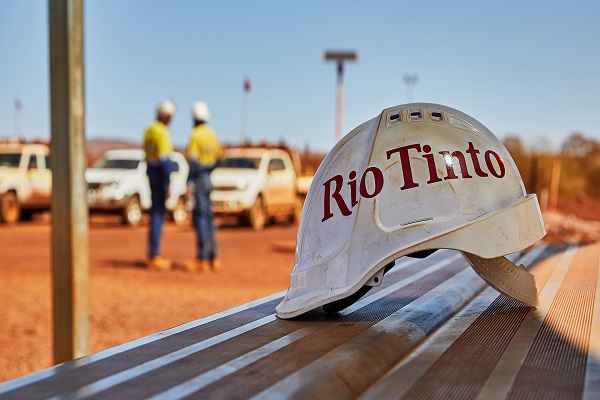ii view: profit fall forces Rio Tinto to slash dividend
22nd February 2023 11:25
by Keith Bowman from interactive investor
Shares in this mining giant are up broadly in line with the FTSE 100 year-to-date, but there's a far more modest dividend this time. We assess prospects.

Full year results to 31 December
- Revenue down 13% to $55.6 billion
- Adjusted earnings down 38% to $13.3 billion (£11 billion)
- Total dividend down 53% to $4.92 per share
- Net debt of $4.2 billion, down from cash of $1.6 billion
Chief Executive Jakob Stausholm said:
“We are building a stronger Rio Tinto and delivering against our four objectives. Our operational performance has improved, as evidenced by a number of second half records being set at our Pilbara iron ore mine and rail system. We are also investing for the future, doubling our stake in the Oyu Tolgoi copper-gold project in Mongolia through the acquisition of Turquoise Hill Resources, progressing the Rincon Lithium Project in Argentina and reaching milestone agreements that underpin the long-term success of our Pilbara iron ore business.”
- Invest with ii: Share Dealing with ii | Open a Stocks & Shares ISA | Our Investment Accounts
ii round-up:
Mining mammoth Rio Tinto Registered Shares (LSE:RIO) today detailed annual profits for 2022 which fell shy of City expectations given elevated costs such as diesel, but it left guidance for 2023 broadly unchanged.
Adjusted profit fell by nearly two-fifths to $13.3 billion (£11 billion) as lower commodity prices reduced sales by 13% to $55.6 billion. A total dividend for 2022 of $4.92 per share was down from $10.40 in 2021, although it still beat analyst estimates of $4.82 per share.
Rio shares fell by 3% in UK trading having come into this latest announcement up by 7% year-to-date. That’s the same as rival BHP Group Ltd (LSE:BHP) and in contrast to a near 9% fall for fellow FTSE 100 miner Glencore (LSE:GLEN). The FTSE 100 index itself is up just under 5% so far in 2023.
Rio’s production estimates for 2023 remain unchanged, with volumes for its core iron ore product expected to come in at 320-335 million tonnes (mt) compared to 322 mt last year.
- Dividend investors face big decision as miners cut payouts
- 10 of the best mining shares for dividend investors
The average price for iron ore achieved in 2022 fell by a quarter compared to 2021 as China remained disrupted by the pandemic and fears for a global recession weighed. A reopening of China’s economy from Covid restrictions late last year has, however, supported hopes that the Asian powerhouse can potentially counter any Western economic weakness.
A final dividend of $2.25 per share was cut from $4.17 in 2021, although the payment is in line with Rio's policy to pay out 60% of adjusted earnings. Expected capital expenditure over 2023 is now expected to prove at the low end of its previous $8-$9 billion range.
A first-quarter production update is scheduled for 20 April.
ii view:
Tracing its history back to 1873, diversified miner Rio Tinto today employs over 45,000 people worldwide. It has strong presences on the ground in both Australia and North America, although it is located across more than 30 countries. Its core commodities are iron ore generating almost 60% of sales, aluminium at around 25% and copper at 6%. China generates its biggest slug of sales at just under 55%, followed by the US at 16%.
For investors, commodity demand is tied to economic growth, making mining a very cyclical industry. Concerns about further interest rate rises and their potential to tip economies into recession persist, while relations between the West and China should be monitored given its status as Rio’s biggest customer. Group costs have risen, further pandemic disruption in China cannot be ruled out, while Rio’s Environmental, Social and Governance (ESG) policy has come firmly into the spotlight over recent years.
- Eight easy ways to boost your ISA returns
- 2023 Investment Outlook: stock tips, forecasts, predictions and tax changes
On the upside, a diversity of commodities is mined in contrast to more focused rivals such as Antofagasta (LSE:ANTO) and Fresnillo (LSE:FRES). Plans to improve efficiency via automated vehicles are being considered, moves to refocus its commodity products towards climate change or decarbonising materials have been made, while efforts to improve its ESG policy are being pursued.
For now, and while some caution remains sensible, an estimated future dividend yield of around 6% is still very respectable and should keep income investors interested.
Positive
- Exposure to a diverse portfolio of commodities
- Attractive dividend payment (not guaranteed)
Negative
- Uncertain global economic outlook
- Ethical policy concerns
The average rating of stock market analysts:
Hold
These articles are provided for information purposes only. Occasionally, an opinion about whether to buy or sell a specific investment may be provided by third parties. The content is not intended to be a personal recommendation to buy or sell any financial instrument or product, or to adopt any investment strategy as it is not provided based on an assessment of your investing knowledge and experience, your financial situation or your investment objectives. The value of your investments, and the income derived from them, may go down as well as up. You may not get back all the money that you invest. The investments referred to in this article may not be suitable for all investors, and if in doubt, an investor should seek advice from a qualified investment adviser.
Full performance can be found on the company or index summary page on the interactive investor website. Simply click on the company's or index name highlighted in the article.